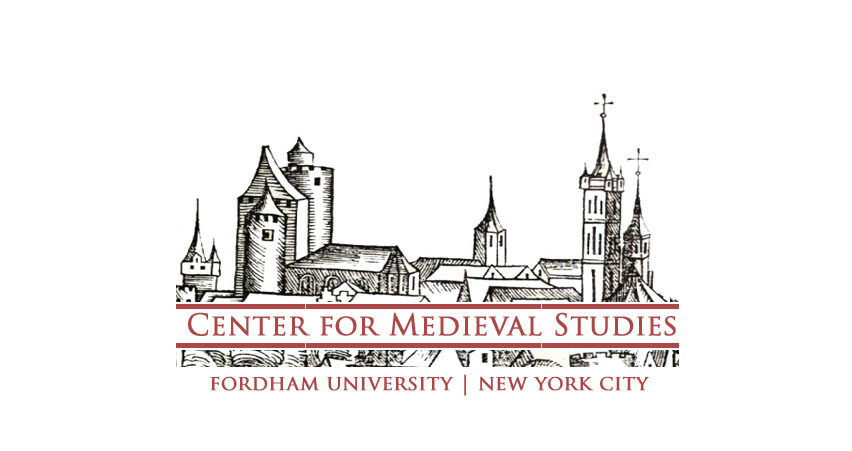Welcome to the third posting of the Medieval Londoners Blog. Please subscribe to receive updates on new material added to the Medieval Londoners Project and other items of interest to those working on medieval London. Since our last post, MLD has added around 900 records on London Goldsmiths, 300 records on the London tapicers, 350 records of fletchers in London, and 130 records of Chancery clerks active in the reign of Henry V. For other forthcoming datasets, see What’s New in MLD?
In addition to highlighting these datasets, this issue of the MLD Blog starts off by focusing on the single largest contribution to date of records to MLD.
Biographies of the London Mercers
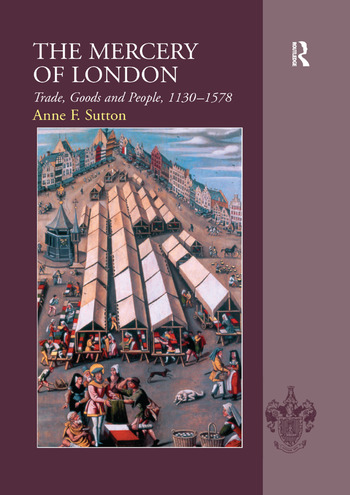
One of the first contributions to MLD was from Dr Anne Sutton, who generously donated more than 3,300 biographies of Mercers that she had compiled over decades of working on this London company. Her biographies were stored in fifty separate Microsoft Word files, which MLD’s Data Analyst, Liz Duchovni, was able to electronically harvest for upload into the MLD structured data format.
The full text of the biographies was placed in the Activity field of MLD, although relevant data was also placed in such fields as Identifier (which distinguishes apprentices and masters), Craft Office, and the Year of the first reference to the individual, among other fields.
Sutton’s biographies usually start with variant spellings of the Mercer’s surname, followed by a chronological list of references to the individual Mercer and his dealings. Much of the information involves payments and fees in the Wardens’ Accounts, which allow us to track the Mercer’s appearance as an apprentice, his acceptance into the craft, and sometimes his rise to such positions as liveryman, master, and warden. Sutton also drew heavily on the Acts of the Court of the Mercers, the Repertories, Husting and PCC wills, and other archival material to which she had access as the Archivist (1981-99) and Historian (since 1999) of the Mercers Company.
The MLD biographies reproduce the abbreviations employed by Sutton, which parallel those she employs in her pathbreaking book, The Mercery of London: Trade, Goods and People, 1130–1578 (Routledge, 2005). We have also provided a short guide to Sutton’s editorial practices and a select bibliography of her publications on London’s Mercers.
To find all the MLD records contributed by Dr Sutton, go to the Browse Records page and write Sutton in the search box at the top of the Source column. You can further refine the search by using the filters on the left side of the screen. You can, for example, find all the Mercers in a certain parish or ward, or who were listed as masters, or who was active in a certain range of years. Clicking on the code for Woman in the Identifier filter brings up the 24 women associated with the Mercers, most of them silkwomen, whose marital and working lives Dr Sutton has done much to elucidate in a series of articles.
The Tapicers
In February 2022, Lesley Fraser contributed 305 references to London tapicers that she had gathered in the course of research on her dissertation, “Material Culture in Fifteenth-Century England: The Case of Sir John Fastolf (1380-1459)” in the department of Art History at the University of Edinburgh. Her London references came from a wide range of sources, including the Letter Books, Plea and Memoranda Rolls, Coroners Rolls, and the national Calendars of Close Rolls and Patent Rolls, among other sources. Her familiarity with the names of the tapicers allowed her to spot many references that others would have missed.
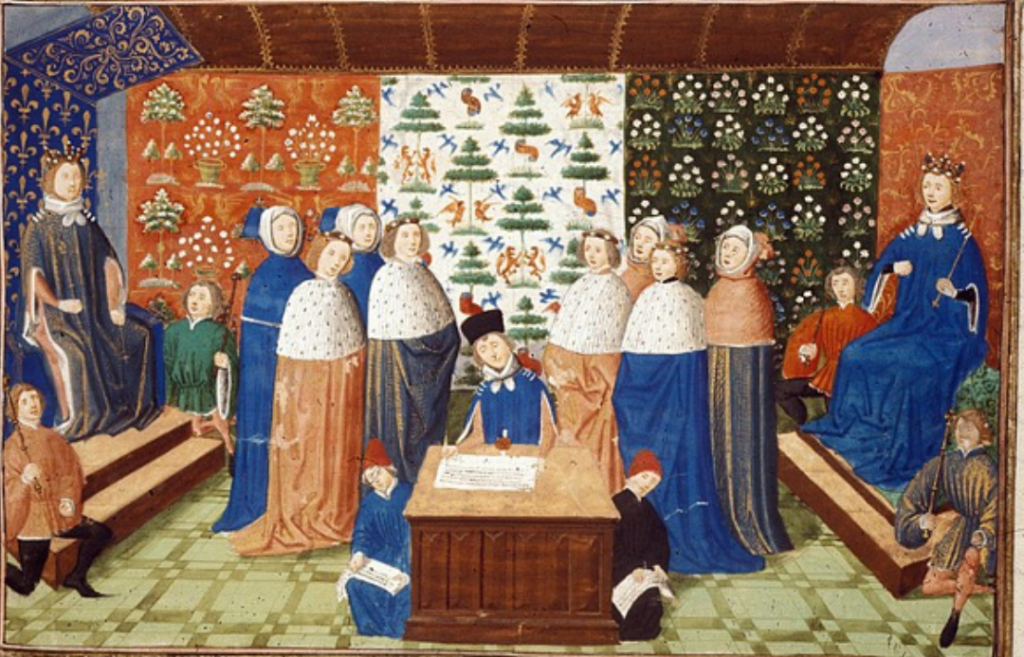
The tapicers used a loom to weave woollen tapestries depicting colorful images such as heraldic arms, religious or secular scenes, animals, plants, and a variety of other themes. The process was very time-consuming and the final product could be expensive, although a variety of records show that modestly-priced tapestries were also widely available. The most artistic and high-priced medieval tapestries were imported from the Southern Netherlands. Very little is known about the tapestry industry in medieval England, and the only surviving examples of English work come from York. The 1331 ordinance of the Tapicers confirmed by the city focused primarily on regulating the quality of the product, which could be used as wall hangings, cushions, and on beds—all mentioned in the wills and probate inventories of well-off medieval Londoners—and even as blankets and rugs.
The craft’s role in maintaining quality can be seen in their accusation in 1374 against Katherine Duchewoman in Finch Lane, who had woven a tapestry that was about 4 yards long and almost 2 yards wide, but had used a linen rather than a wool base (likely a reference to the warp). Her tapestry was called a “coster,” which often referred to a woven hanging on the valence or sides of a bed. Katherine failed to appear before the four master wardens of the craft to answer the charge. After examining the so-called “false work,” the masters ordered that it be burned, a standard punishment in cases like this. Yet the master and other men of the craft who conferred on the case ended up not going through with the punishment, perhaps a recognition that Katherine—likely an immigrant and not a member of the guild—was unfamiliar with the craft’s regulations. It is also possible that they recognized the skill and tremendous investment of time that this tapestry must have entailed, and were perhaps eager to hire Katherine themselves since the case makes clear that it would be difficult for her to operate on her own in London.
The Fletchers
This year the London Fletchers celebrate their 650th anniversary. The earliest extant reference to the company is in March 1371, when leaders among the Bowyers and the Fletchers agreed that their craft should split into two. This early history is detailed in a recent book by Dr Hannes Kleineke (himself a member of the company), who has kindly contributed c. 350 references to London fletechers that he had collected for his new book (see below for details). His dataset includes many references from the craft’s quarterage accounts, which survive from 1519 and record quarterly payments by members of the craft, the name two wardens each year, and (increasingly) the names of widows taking over when their husbands died. The first ordinance of the Fletchers was proclaimed in 1403, which gave the crafts rights of search over all arrows, arrow-heads, and quarrels (bolts for crossbows) made in the city by citizens or non-citizens in order to ensure that their products were of good quality. Also included are references to Fletchers in the WAALT Indices, the Letterbooks, Plea and Memoranda Rolls, Journals, PCC and Commissary court wills, and national calendars of Close and Patent Rolls.
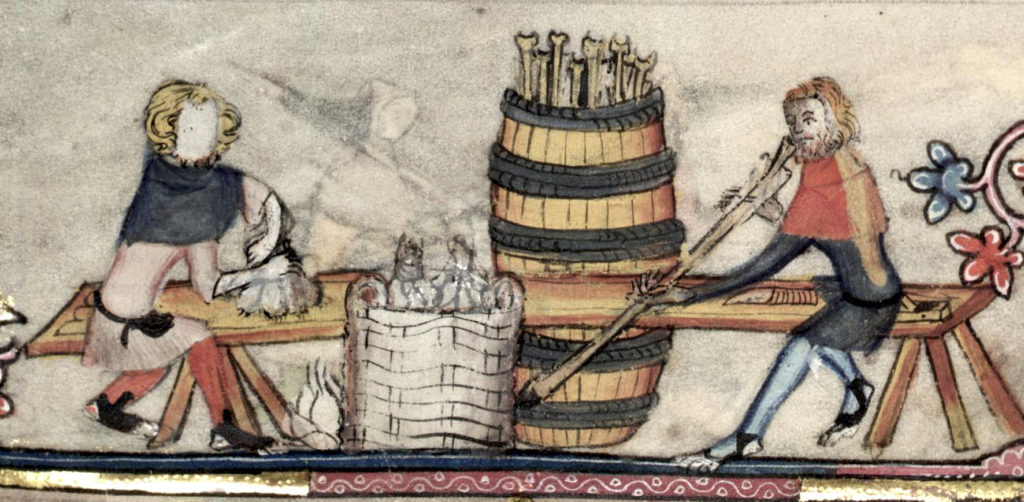
Chancery Clerks in the Reign of Henry V
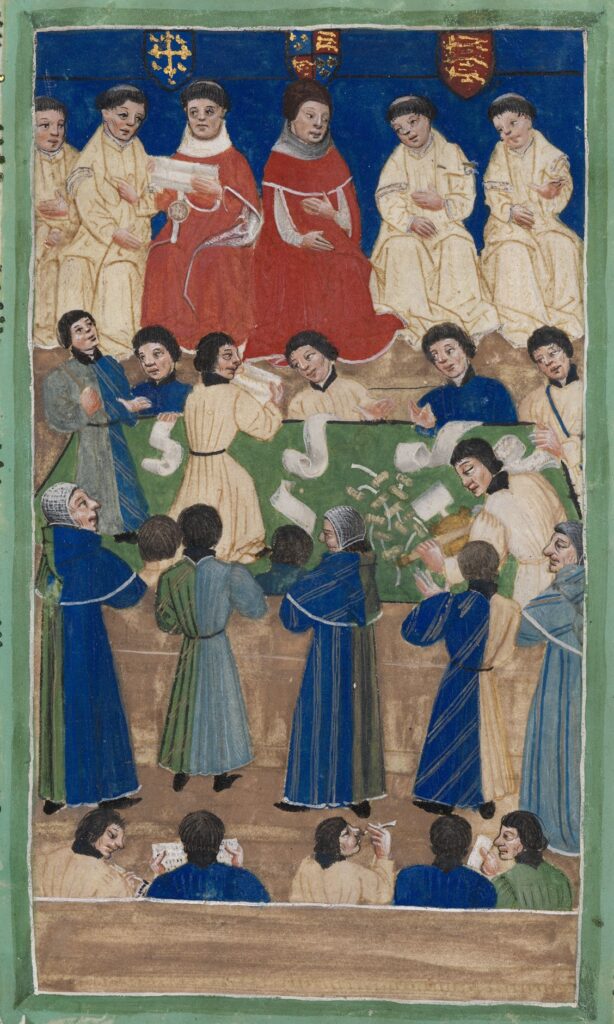
The Chancery was the government office that wrote official documents issued under the king’s Great Seal. Its business was so voluminous by the fifteenth century that the office employed about 120 Chancery clerks in any one year. They wrote out charters, letters patent, writs to initiate legal actions, appointments of sheriffs and other officials, powers of attorney, acknowledgements of debts, diplomatic agreements, Parliamentary proceedings, and inventories of the king’s jewels, among other items of business. In 1999, Malcolm Richardson published The English Chancery under Henry V (List and Index Society vol. 30) in which he examined the Chancery bureaucracy and the wide range of tasks assigned to the clerks. A large part of the volume were 131 biographies of the Chancery clerks who served in the period 1413-22, which Richardson has not only contributed to MLD, but also updated when appropriate. Prof. Richardson has also provided an introductory essay on “The Royal Chancery and Chancery Clerks in the Late Middle Ages.”
Most Chancery clerks were minor clergy who were rewarded for their work with benefices that did not require them to administer sacraments. They also found ways to make extra money from private citizens for entering deeds, bonds, and other legal resolutions on the backs of official rolls, or by serving as sureties (mainpernors) for litigants in the central courts of Westminster. Richardson also identifies how they profited from ‘insider trading’ by capitalizing on their first-hand knowledge of confiscations and reversions of property to the crown by securing appointments to supervise lands and revenues for the king or by investing in properties that became available. Between 1350 and 1417, Chancery clerks also leased or managed a number of legal inns in the Holborn area, where the majority of them lived since their administrative headquarters was in the old Domus Conversorum (the House of [Jewish] converts) in Chancery Lane. Richardson also identifies “syndicates” of Chancery clerks, groupings often based on their home regions (such as Yorkshire and Norfolk), who worked together to profit from moneylending, mainperning, and investing in real estate.
London Goldsmiths
In early February MLD uploaded c. 900 records of London Goldsmiths, including Wardens and Renters of the craft from 1335 to 1510, and biographical notes of prominent Goldsmiths, taken from T. F. Reddaway, The Early History of the Goldsmiths’ Company, 1327-1509 (London, 1975). This dataset was compiled by Ellie O’Dwyer, a high-school student in Kingston, NY, as part of an independent research project. She is continuing this work by creating records for Goldsmiths who were not the subject of one of Reddaway’s biographies and did not serve as a craft official.
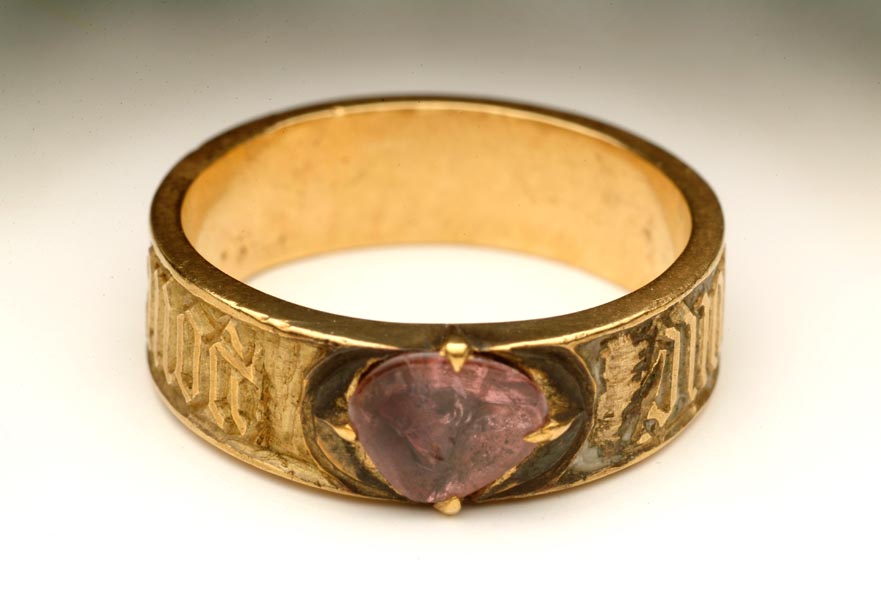
Goldsmiths ranked fifth among the Twelve Great Livery Companies of late medieval London. They worked with precious gold and silver to fashion rings, brooches, and containers such as cups, platters, and chalices, among other ornaments. They were a large group. In 1465, a Bohemian nobleman who visited London commented: “In that city are a great number of goldsmiths, more than I have ever seen. The masters alone, without the journeymen, amount to four hundred, but they are never idle, for the size of the city and its wealth provide them with work in abundance” (Letts, ed., The Travels of Leo of Rozmital, Hakluyt Soc, 1957, p. 54). One of the London Goldsmiths at this time was Edmund Shaa, who arrived from Cheshire to take up an apprenticeship with a London Goldsmith. In 1462 the king appointed him engraver to the mints in the Tower of London and Calais, a position he held for twenty years until his nephew, John Shaa, took over. Edmund served as warden, renter, and prime warden of the Goldsmith’s Company, as well as alderman, sheriff and eventually mayor of London in 1483, when he was elevated to a knighthood and became a Privy Councillor because of his support for Richard III. He had business dealings with both Edward IV and Richard III. His activites can be tracked in his MLD profile.
New Books on Medieval London
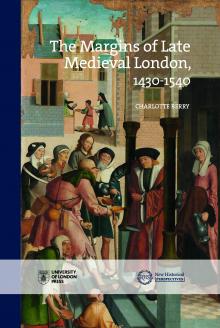
Charlotte Barry. The Margins of Late Medieval London, 1430-1540. London: University of London Press, 2022. This study of medieval London’s urban fringe offers a detailed and novel approach to understanding London beyond its institutional structures. Using a combination of experimental digital, quantitative, and qualitative methodologies, the volume casts new light on urban life at the level of the neighbourhood and considers the differences in economy, society, and sociability which existed in different areas of a vibrant premodern city. It focuses on the dynamism and mobility that shaped city life, integrating the experiences of London’s poor and migrant communities, while also exploring the strategies they employed to mitigate their precarious position (summarized from the publisher’s website). This book is published in New Historical Perspectives, an Open Access monograph series for Early Career Scholars from the Royal Historical Society and Institute of Historical Research.
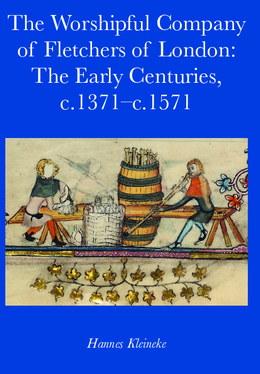
Hannes Kleineke.The Worshipful Company of Fletchers of London: The Early Centuries, c.1371-c.1571. London: Worshipful Company of Fletchers, 2021. Paperback, ISBN: 9781399901666.
This new history, commissioned by the Fletchers Company as part of their celebrations to mark the 650th anniversary and based on extensive archival research, traces the first centuries of the Company’s history. It explores the Company’s early commercial activities and its role in the life of the cty, while also shedding light on some of its early members, including several women. An Appendix provides the texts and translations of the company’s early ordinances up to 1592. All proceeds from the sale of the publication to go The Fletchers Trust, a charitable trust chiefly dedicated to supporting archers with disabilities. Grants are also made to newcomers to archery, experienced and elite archers, and to archery clubs. To purchase a copy of his book (£10 plus postage), contact clerk@fletcher.org.uk. Also available from Waterstones.
